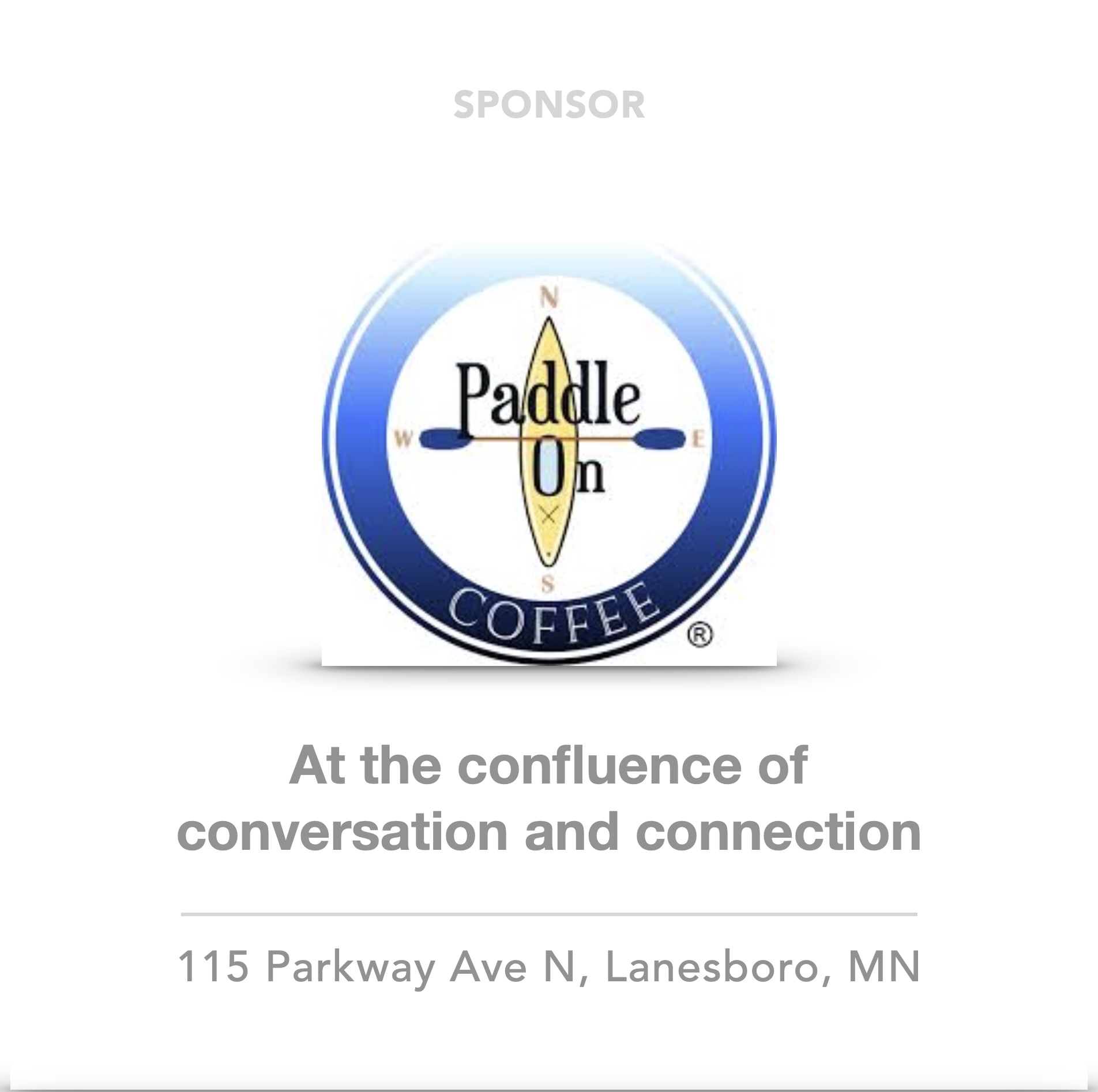Homeschooling: A Closer Look
Homeschooling is growing as a mainstream option for educating children.

FILLMORE COUNTY – There are many educational options available to students and parents in Minnesota today: Open Enrollment. Charter Schools. Private Schools. Magnet Schools. Public Schools. Online Schools. And Homeschooling.
Parents choosing to teach their children at home is becoming more popular even as it remains a mystery to most of us.
It’s very likely that you already have an opinion about homeschooling, pro or con. It is also likely that you know someone who opts to homeschool his or her children. I had strong opinions before I became a homeschooler and, afterwards, when I became a licensed teacher with a Master’s degree in Education. What we don’t understand, we tend to discount or even fear.
My goal in writing this article is not to create an all-or-nothing conventional school vs home school debate, but rather to express support for the freedom of parents to choose how to educate their children. My hope is that you’ll read with a critical but open mind the reasons people choose to homeschool, the experiences of several local homeschoolers, an exploration of common misperceptions about homeschooling, financial data, some downsides of teaching children at home, and resources for information and support for those considering the homeschool option.
Perspective – My own story
I have two sons, now in their 30’s. When they were little, I never questioned the common public school track – daycare, preschool, kindergarten through grade 12 and, hopefully, college.
When my youngest son refused to talk in school we were perplexed. He would talk a blue streak at home so we knew he was capable of it. He stopped talking in preschool. He didn’t talk in kindergarten. When he got to first grade we met with school experts and leadership and complied when they insisted that we take our son for evaluation with the team of professional psychologists they’d recommended.
After observing me with my six-year-old for half an hour in a large, echoing room, where he chose a toy and sat in my lap to play with it, the team of four decided that my son and I were unhealthily “enmeshed” and their instruction to me was to disengage from him – don’t hug him, don’t care for him, don’t play with him. Let someone else do it.
Mind you, I was a working mom so I was out of the home at least 40 hours a week. This advice sounded, at best, misguided, and, at worst, damaging. So, my husband and I stretched a tight budget and took our son for evaluation at the University of Minnesota. That child psychologist, the head of the department, told us that our son was not “enmeshed,” he simply did not want to go to school and, because we told him he had to go, he went, but at the same time, he was exercising the only form of control he had – to speak or not speak. We were instructed to give our son as much control as possible in other areas of his life. We explained this to the teachers and got the necessary documentation for school leadership. We continued with counseling sessions.
By the end of second grade our son was speaking up but exercised control by wearing his shoes on the wrong feet and his coat inside out for an entire winter. Still, school wasn’t smooth sailing. At student-directed parent/teacher conferences our son would respond to prompts like this: “What did you like learning most this quarter?” Nothing. “What will you work to improve on next quarter?” I don’t know.
By third grade our playful, goofy, bright son had grown sullen. My older son, at this time, was also struggling. He was a perfectionist and trying so hard in his studies that I found him occasionally up in the middle of the night redoing his homework, tears rolling down his cheeks. I strongly felt that the school system was hurting my children and I saw that both of them were beginning to hate learning.

The author’s children, who were homeschooled for two years, were intrigued by the Trojan Horse after reading a version of the Odyssey. They asked to create their own model complete with a trap door. (Photo by Julie Little)
I dreamed of teaching them myself but I was afraid that I wouldn’t do it well enough and that I could possibly do more harm than good. But I studied, planned, talked to homeschoolers, and decided to teach my sons at home for 4th and 5th grades. I continued to work 20-30 hours per week but shifted to nights and weekends. After the first year, all of us were so pleased with the results that we did a second year of learning at home before we decided together that they were ready to learn in public school again.
Homeschooling was never easy and I sacrificed a lot of sleep over those two years. But the positive changes in my sons and in our family relationships were dramatic. In addition, I gained confidence as a teacher and found that teaching at home was incredibly efficient. I could incorporate subjects beyond traditional education for them including Logic, Philosophy, Debate, Grammar, Academic Writing and Creative Writing, Improv Theater, Art and Music History, Comparative Religion, and we could do field trips, community service, and extra-curricular activities all without having hours of homework at night.
The son that needed control had many elements of choice built in. The perfectionist son received lots of recognition of his amazing efforts and assurance that he was loved for himself even when he wasn’t perfect. Both started to enjoy learning again and to seek out their own opportunities to enhance what they were studying.
You may be wondering how it all worked out. When my sons were done homeschooling I was not done teaching so I went to graduate school in my 40’s to become a public school teacher. My eldest son got a Bio-Medical Science degree and graduated with honors. My youngest spent a year in college and then chose to go into the trades, switching to a technical college. He loves what he does.
Homeschool is becoming more mainstream
According to U.S. Census figures, pre-pandemic there were about 20,000 families teaching their children at home in Minnesota. In ‘20-21, during COVID, that number grew to 30,955. Black families moved toward the homeschool option in even greater numbers, increasing their homeschooling families by five times, from 3.3% to 16.1% nationally in ’20-21. Post-pandemic numbers decreased but not back to earlier levels (United States Census Bureau, Household Pulse Survey, 2021).
In fact, the National Home Education Research Institute states that parent-led home-based education is becoming less “alternative” and more “mainstream,” and may be the fastest growing form of education in the United States” (Brian D.Ray, Ph.D., Research Facts on Homeschooling, 2023).
Families who homeschool are demographically diverse. According to the U.S. Department of Education, “there are atheists, Christians and Mormons, conservatives, libertarians and liberals, low-, middle-, and high-income families; black, Hispanic, and white [families]; parents with Ph.D.s, GEDs, and no high school diplomas” (2019). To date, there is no empirical evidence that level of parental education makes a significant difference in students’ academic achievement (Brian D.Ray, Ph.D., Academic Achievement and Home School Demographics, 2010).

Families participate in Tesmer Farm Safety Day Camp in Mabel. (Photo by Steph Dahl)
There is also diversity in family work situations with homeschoolers that are single parents, those with one spouse working and the other at home, those with home-based businesses, and situations like mine where both parents work outside the home, accordingly to the NCES, National Center for Education Statistics (2021).
Parents choose to homeschool for a variety of reasons and those reasons change over time. The NCES reports that the most popular reasons (retrieved October, 2023) include:
School Environment (33.8%): The number one reason parents cite for teaching their children at home is concern about the school environment which includes safety, guns, health concerns, drugs, negative peer pressure, and more.
Academic Quality (17%): Teachers work hard and I can tell you from personal experience that teacher education is rigorous, challenging, and comprehensive. But the system is under stress, understaffed, with large class sizes, changing benchmarks, etc. Parents are increasingly citing dissatisfaction with the quality of their child’s academic instruction as their reason to educate at home.
Religious Instruction (15.8%): About two thirds of homeschool families identify as Christian. Comparing this to the general population, Pew Research reports that about 70.65% of the general population in the United States identifies as Christian, 6% follow non-Christian religions (Jewish, Muslim, Buddhist, Hindu, Other) and 22.8% are unaffiliated with religion, including a growing number of atheists and agnostics. So, homeschoolers are pretty close to the distribution of religions in greater society (Religious Landscape Study, retrieved October 30, 2023).
Child has Special Needs Other Than a Physical or Mental Health Issue (5.8%): Perhaps a student has a learning difference like dyslexia or is an advanced learner where the pace of the classroom leaves them bored or frustrated. Perhaps the student has a learning modality that makes classroom learning difficult. Modalities are visual, auditory, tactile, and kinesthetic. (My son was a kinesthetic learner, someone who connects learning with movement. Sitting at a desk was torture for him and not conducive to his learning.).
Desire for a Nontraditional Approach to Education (5.6%): A growing number of parents want to incorporate their culture or heritage into instruction. Forty percent of black homeschool parents said they wanted to infuse more African American/black culture and history into instruction and 20% said they wanted to avoid racism in public schools (Ray, Brian D., Journal of School Choice, 2017). Some parents don’t believe in grades and tests. Some value volunteering and want to incorporate service learning. Some value self-directed learning over curriculum-directed learning. Some want to incorporate practical or business skills into their daily education.
Child has a Physical or Mental Health Issue (5.5%): These are medically-diagnosed conditions causing chronic physical impairment such as problems with vision, hearing, mobility or motor skills, problem-solving, etc., or conditions that seriously affect the way children learn, behave, or handle their emotions including depression, anxiety, ADHD, ODD, and social/behavior issues in general (National Library of Medicine, retrieved October 30, 2023).
Note: The federal government provides funding to schools through the Individuals with Disabilities Education Act (IDEA) to accommodate special needs. Rules vary by state and in Minnesota, homeschools are considered private schools, therefore eligible for some level of funding. The exact amount is determined by the school district (How to Continue Your IEP, Even if You Start Homeschooling, National School Choice Week, 2023).
Parents Want to Provide Moral Instruction (4.7%): Moral instruction is identified as teaching a particular set of values that are apart from or in addition to religion such as empathy, altruism, civic responsibility, social justice, and to build moral reasoning ability.

Odyssey Homeschool Association held a painting class with Backyard Brushes in Winona. (Photo by Steph Dahl)
Other motivations to homeschool that I heard from each of the homeschoolers I interviewed: 1) They do it for the love of it. These home educators, like me, enjoyed being with their children and sharing the experience of learning with them. 2) They do it because it works for their family. In their experience, home educators believe their kids are happier, healthier, enjoy learning more and learn well at home.
Experiences of three local homeschool families
Heather: “I had no background in teaching.”
Heather Swartzentruber started teaching her daughter at home in 5th grade during the pandemic. There were health issues but also academic reasons. When schools were closed, students were attending school online and Heather was more aware of what was and was not being taught. She questioned it and wanted something different. This is now their 4th year of homeschooling. Her daughter is in 8th grade and has expressed no desire to return to public school.
Making the decision to homeschool involved a lot of research (the laws seemed intimidating) and a lot of worry. “I was never homeschooled. I had no background in teaching,” Heather admits, “and school had been hard for me. I struggled. But other homeschoolers I knew encouraged me to try it. The worst-case scenario was, if it didn’t work, my daughter could go back to public school.”
Heather actually found the application process fairly easy to navigate. “Basically, you have a form you submit to the district you live in expressing your intent to homeschool. You have to agree to teach certain subjects and commit to doing a standardized test annually. I chose the California Achievement Test. It’s a popular one with homeschoolers because you can administer it at home.”
“One thing I love about homeschooling,” Heather says, “is the flexibility and the one-on-one. We can plan a vacation or go to the orthodontist when we need to. We’re in charge of what’s being taught. If my daughter finds something she is good at, we move through it fast and work with more challenging material. If something comes harder, we spend more time on it. At home, we can pick and choose our curriculum, find one that fits, one that seems more fun.” Heather also enjoys the time she spends with her daughter and finds that their relationship is easier too.
Heather no longer worries about her ability to teach. “It’s like I’m going back to school myself learning alongside my daughter and I’m learning more now than I ever did when I was in school! I was trained that if you’re not learning from a textbook, you’re not learning, but, in truth, we’re learning all the time! I used to think that homeschooling was doing public school at home. It’s not. Homeschool can be more creative.” An example she gives is what they do on Fridays. Fridays in their homeschool are creative days where they don’t do bookwork. It’s a day to enjoy learning with field trips, baking (double a recipe or do half batches of cookies), make homemade games, or seek out volunteer opportunities. There is little division between learning and life.
Mya: “The most important part … is the relationship.”
There was no question in Mya Hagen’s mind about homeschooling her children. She was homeschooled herself and valued it. She says, “I was happy with my childhood experience and felt that I was able to develop who I was and what I believed. But the most important part for me and my children is the relationship piece. We’re involved with our kids’ everyday life. We take time to invest in them and stand alongside them as they evaluate the world. I wouldn’t trade time with my kids for anything.” Mya has four children ages 12, 9, 7, and 5. All of them have been educated at home.
When Hannah Wingert, the librarian at Preston Public Library, noted that there was a growing interest in homeschooling and more demand for materials, she asked Mya and two other homeschoolers to lead an information session that they called “Homeschooling 101.” Mya also frequently offers insight for others into the biggest concern she hears: the question of socialization.
“Socialization,” Mya explains, “is, by definition, taking part in social activities – it’s any time you’re spending time with other people. We can do that through sports programs, music lessons, homeschool groups, church, choir, going to the library, having play dates…Socialization is more than just spending time with your friends. It’s about how you interact with the world. My husband runs a business out of our home and our children are exposed to many cultures and viewpoints. They get to see how he interacts with clients. They see how I make a doctor’s appointment or shop for groceries. Parenting doesn’t stop at age five in teaching our kids how to be well-mannered, productive citizens and adults. We’re just doing that instruction ourselves, hands-on, instead of paying someone [schools and teachers] to do it.” Mya is quick to add that this is not meant to be a homeschool vs public school argument. She just wants to offer knowledge about how homeschoolers do socialize and advocate for parents’ ability to decide for themselves.
As a homeschooler, Mya herself was involved in 4-H, a Bible group, and youth groups including the Fillmore County Homeschool Community where they had activities like camping, tours of businesses, job shadowing events, project days, service projects and classes. She attended a speech class in a group every week where they got an assignment and then presented their speeches. Home school, counter to what many people think, doesn’t just take place at home.
“The best way to find out about homeschooling is to talk to other homeschoolers,” Mya advises. “The next best way is to explore the internet.”

Mya Hagen (left) and Kristen Zoellner (right) took different paths to homeschooling. Mya was homeschooled as a child; Kristen chose homeschooling when she became a parent. (Photo by Julie Little)
Kirsten: “You don’t have to limit your kids to small world views.”
Kirsten Zoellner says she and her husband “fell into homeschooling.” It was 2004 and their first child was about to start kindergarten. The school their daughter would have attended was known to have problems with violence and there was no open enrollment or choice about it. Kirsten and her husband decided to use Connections Academy, a tuition-free online K-12 option with certified teachers and a set curriculum where the school worked in partnership with parents.
She discovered that she liked the learning experience with her daughter who was bright and inquisitive. After the first year, Kirsten started pulling curriculum from an array of sources to increase the learning challenge. “Each of our children matured at different rates and had widely varying learning styles so one approach never worked for us. I had to learn that change wasn’t a bad thing. If a curriculum didn’t engage our kids, we found something that did.”
As a teacher, Kirsten wanted to add to the traditional education experience. “You don’t have to limit your kids to small world views,” she says, “immerse them in experiences, help them experience life with family in a safe space. I want my kids to be excited and willing to learn, to be open to things, to have an openness of heart. It’s a character-evolving thing.” Every year, for example, they attend the Dakota Nation Gathering. Kirsten doesn’t just want her kids to hear about things. She wants them fully immersed in the learning.
The Zoellner’s now have six children. Two have graduated from college and the youngest is seven. Kirsten laughs, “I was hard on myself at first. You never think you’re doing enough. You always worry that you’re not teaching enough or not giving enough opportunities to learn. It wasn’t until my oldest graduated from the U of M that I first thought, ‘Maybe I can do this!” In fact, when her daughter, who had always been homeschooled, applied to six colleges, she was accepted at every one. Kirsten says, “Four of the colleges said they were specifically seeking homeschooled students because they’re so driven and they know how to learn. That was nice to hear!“
There are no grades in Kirsten’s homeschool. She says, “in our family, if you don’t understand something we go back to the beginning of that concept and start to learn it again.” In the end, the grades would all be A’s and therefore, irrelevant, because the goal is not the grade, it’s the understanding of the learning and why it’s important. “Our kids take an active role in their learning. They know how to set their goals and meet them. And they learn with their loved ones who want them to excel.”
In 2014, Kirsten and two friends formed a local homeschooling community called Odyssey Homeschooling Association that now has over 100 members and serves at least five counties: Fillmore, Winona, Mower, Olmsted, Houston and beyond. “It’s a place to go to gather and talk. We have some field trips and classes. We get together to socialize, learn, support and encourage each other. This is a group for everyone,” Kirsten says, “We have married homeschoolers and single dads and moms. There are no boundaries. It’s not secular or religious. There are no age restrictions. You just need an open mind, a willingness to try something different, fortitude to deal with naysayers, and the ability to forgive yourself.” (Find more information below under “Resources”)

Preston librarian Hannah Wingert set up a resource section at the library for Homeschool teachers. The library offers regular programs for homeschooler groups. (Photo by Julie Little)
Addressing common misperceptions of homeschooling
Myth: Homeschooling is just for religious fanatics. While some people homeschool for religious reasons, 84% of homeschoolers do it for other reasons like school environment. The evolution of homeschooling in the U.S. can be summarized from the National Home Education Research Institute report.
In Colonial times, it was the norm for children to be taught at home. Then, in the 1800’s, laws were passed in many states making homeschooling illegal. It wasn’t until the 1970’s and a push by John Holt, who was known for his “liberal left” views, that a homeschool movement started again.
Holt argued that Americans had lost their ideal of self-sufficiency and that student learning had become motivated more by fear than by a child’s natural desire for self-discovery. He conducted research, proposed a homeschool pedagogy, connected homeschoolers via a newsletter and called for parents to remove their children from public schools.
Homeschooling became the preferred form of education for communes and the counter-culture who saw public schools as “too Conservative.” Holt’s philosophy led to a very unstructured type of home education called “Unschooling.”
The Christian Homeschooling movement was instigated by Dr. Raymond Moore and his wife, Dorothy, whose views were frequently published in Holt’s newsletter. The couple’s message gained widespread appeal for Evangelicals and Fundamentalists when they spoke on a radio program called Focus on the Family. In this way, homeschooling developed supporters from both the Progressives, who thought public schools were “bastions of conservative conformity,” and Conservatives, who felt that public schools “had sold out to secularism.”
Christian homeschooling gained more traction in the 1980’s partially due to the development of The Homeschool Legal Defense Association (HSLDA), which was influenced by the Moores. The HSLDA advocated for fewer regulations and defended homeschoolers from legal challenges. The Association of Christian School International was also established in the 80’s. In addition, tax laws changed making private religious schooling less affordable for evangelical Christians. More people then moved education home to incorporate their beliefs and this is when the stereotype of homeschoolers as religious fanatics emerged.
The passage, in 2001, of the No Child Left Behind Act (replaced in 2015 by the Every Student Succeeds Act) with its emphasis on standardized testing led many parents to want alternatives to public education for reasons other than religion. As a result, there was growth in charter schools, private schools, and home education. At the same time, advances in technology and the new accessibility of in-home computers led to a huge expansion of access to learning materials for homeschoolers. Teaching at home became a more practical option.
And then came the pandemic where everybody learned at home for a time.
Myth: Homeschool children won’t be prepared for college or life as productive members of society. John Taylor Gatto, a New York City Teacher of the Year, taught in public schools for 30 years. Then he came to believe that schools were doing students an injustice. He authored books advocating alternative rather than public education including Dumbing Us Down and Weapons of Mass Instruction.
Gatto made an interesting observation: He says that a motivated teen can easily complete a traditional four-year high school curriculum in under two years. He documents that less than one hour of each school day is spent on actual learning. The rest of the time is spent disciplining students, giving directions, cleaning up, collecting and distributing papers, changing classes, making announcements, and getting to and from school.
Homeschoolers are able to bypass all the time wasters. They often use that time to take college level courses and begin their advanced educations already having college credits under their belts. Gatto believed in education, which is a matter of self-mastery first, then self-enlargement and even self-transcendence, but he was not a believer in schooling, which he said is a matter of habit and attitude training (John T. Gatto, 2nd Ed, 2002, Dumbing us Down, New Society Publishers).
Compulsory public education has proposed many admirable goals: It strives to promote scientific thinking and the value of inquiry, to raise the general cultural level of the entire society, to equip adults with skills and knowledge they need to be happy

The Homeschool Resource Section at the Preston Public Library. (Photo by Julie Little)
and productive in a democratic society, to respect human rights, to adopt universal values and become global citizens (Educational Policy Analysis and Strategic Research, V17, N3, 2022, retrieved October 28, 2023). I couldn’t find research or data that showed these goals were being measured or how well they were being accomplished or how traditional schools performed at achieving these goals versus alternative forms of education.
There is some data documenting the effectiveness of homeschool. The Journal of School Choice published an article that evaluated empirical, peer-reviewed research on the results of homeschooling along three lines – academic achievement, social development, and success of homeschoolers as adults.
Overall, 45 empirical studies were reviewed. Seventy-eight percent of them (35 studies) found that homeschooled students or graduates did significantly better than their public schooled peers in terms of academic achievement (15-30 percentage points higher on achievement tests, higher scores on ACT and SAT, and higher college GPA’s).
They also did better in social and emotional development when they got older (they participated in community service in higher numbers, voted more often, and attended public meetings more often than the general population), and in success as adults (they had higher rates of family cohesion, attended and graduated from college in higher numbers, reported higher self-esteem, participated in or held leadership positions in groups like 4H, Scouts, church ministry, political drives, sports teams, and volunteer work).
Eleven percent (5 studies) found no significant difference. Seven percent (3 studies) found mixed results. Four percent (2 studies) found that conventionally schooled students did better. (Brian D. Ray, Ph.D., Journal of School Choice, 11:4, 604-621, 2017.)
For more details on the homeschool versus traditional school research, see What Does the Research Say About the Impact of Homeschooling on Academic and Social Skills? by Rachel Wise, posted October 14, 2020.
Myth: Parents are not trained to teach their children effectively. The data shows that homeschool academic achievement is not affected by whether the parents were ever certified educators. Also, homeschooled students score higher on achievement tests regardless of parents’ level of formal education or a family’s household income (Brian D. Ray, Ph.D., Journal of School Choice, 11:4, 604-621, 2017). The critical factors seem to be the parent’s desire to teach and the child’s desire to learn.
Myth: Governments need to regulate and watch over homeschoolers to make sure learning goals are met. Homeschooling is legal in all 50 states. Each state has jurisdiction over their education policies so rules about homeschooling are diverse. Research shows that 6 states have strict laws, 17 states have moderate laws (register intent, do assessments, provide teacher qualifications and teach specific subject matter), 16 states have low regulations (register intent and do regular assessments – Minnesota belongs here), and 11 states have no regulation or reporting requirements.
Research of homeschooling in all these states shows that there is “no correlation between academic outcomes for homeschooled students and the level of regulation in their state” (Coalition for Responsible Home Education, retrieved October 30, 2023).
Myth: Parents who choose to homeschool do so on their own and homeschooled students are isolated at home. All of the local homeschoolers talked about the variety of opportunities that exist to gather in communities and engage in activities outside the home, from field trips to concerts to lessons to sports. Libraries are there to help, too.

Rooted Learning Company and Odyssey Homeschool Association getting a tour of the Wastewater Treatment Plant in Rushford. (Photo by Kim King)
Homeschoolers engage their students in everyday life and teach them practical skills, immerse them in social exchanges, and model the role of an adult in this society on a regular basis. The internet brings the whole world up close. Choices are made and while some homeschoolers are more connected than others, plenty of opportunities exist for those who choose to use them.
Myth: People who homeschool are anti-public schools. The homeschoolers I interviewed want every parent to be able to make a choice about their child’s education. They recognize that the majority of parents will choose to send their children to public school. Plenty of families find what they need with conventional education and these homeschoolers don’t judge other parents for their choices.
The critical element of effective homeschooling is that teachers and learners want to be doing this particular journey together. It’s not for everyone. It’s also comforting to many beginning homeschoolers that public school is an option that’s available to them if the need arises.
The cost of homeschooling
According to Education Data Initiative, a group of researchers who compile data from schools and from the National Center for Educational Statistics (NCES), the state of Minnesota spent $17,200 per public school pupil, a total of $15 billion in the 21-22 school year. Of this, the federal government provided $1,540, the state provided $10,210 and local government provided $4,740 per pupil (M. Hanson, U.S. Public Spending Education Statistics, September 8, 2023).
Homeschooling parents pay the cost of curriculum, supplies, extra-curricular activities and whatever else is needed for their students with most reports showing an average expenditure of $700-$1800 per student. Like everyone else, homeschoolers pay taxes to support public schools.
The parental downsides of homeschooling
As the saying goes: “There is no free lunch.” These are some of the difficult realities voiced by even the most dedicated homeschoolers:
- Homeschooling takes time, energy, creativity, patience, and dedication. It’s not always easy. And it’s a lot of responsibility. It may be tempting to quit some days. And you can’t blame your problems on anyone else.
- There will be no time when your home is not filled with projects, noise, and chaos and you will probably have no “alone time”.
- Everyone has good days and bad days – kids and teachers. You have to learn to forgive yourself, and your kids, and adjust when bad days hit. Academic plans and goals may be sidetracked by illness, car problems, or life in general. Flexibility is a good skill to have.
- You will likely be doubted, questioned, and sometimes even bullied by people about your choice to homeschool (though often these can be balanced by those who believe in and support you). You’ll get tired of people quizzing your kids trying to figure out if they’re learning anything.
- You will feel like you’re always cooking and cleaning up. You don’t have the luxury of lunch workers in cafeterias or a janitorial staff. Housework will suffer. It’s just not as important as spending learning time with your children.
- Homeschooling isn’t overly expensive, but neither are you getting paid for your time and labor. There will be sacrifices made.
A tale of two public school experiences
I have immersed you in details about homeschool and homeschoolers so let me share a couple of experiences I had as an adult in public schools. These two instances were when I was a student in grad school learning to become a teacher. Part of teacher training is to spend hundreds of hours in classrooms from kindergarten through high school observing and participating as much as the host teacher can accommodate.
Public School—Above and Beyond: I was doing service learning in a 4th grade classroom. There were no desks and the learning space was tables set up in a U-shape. The room had a large projection screen on the wall and a computer and keyboard on the table. A student showed me where to sit and soon after I heard a motorized wheelchair humming behind me. It was driven by a boy who may have had cerebral palsy. He pulled up alongside me at the table. (The table setup, where all students sat easily – 3 were in wheelchairs – made for a more inclusive classroom than traditional desks.)
Immediately, another student came over to make introductions. “This is Jared,” she said smiling, “he can do a lot more than he lets on so don’t let him trick you into doing his work for him.” Jared laughed. I felt a sense of ease and camaraderie. As I watched, the teacher took a seat by the screen and another student took control of the computer. (She switched out the students controlling the computer twice during the lesson. I got the impression that quite a few students knew how to expertly work the technology and enjoyed being this teacher’s right hand.)

STEAM Kits (Science, Technology, Engineering, Art, and Math) at the Preston Public Library are available for Homeschool teachers to check out. (Photo by Julie Little)
When the teacher was talking, she often glanced at and addressed individual students by name. She’d say something like, “During the Civil War, Michael, one third of the soldiers who fought for the Union were immigrants. And, Marissa, about one in ten soldiers was African American…” As names were called, those students often looked up and smiled.
When I asked her about it later the teacher said that many of her students had ADHD and by using their names during lecture (a method of teaching that was difficult for them) she gently and positively invited them to stay with the class and engaged in the learning experience.
I remember thinking that this is, perhaps, the ideal of socialization and citizenship we dream about for our schools. It was so unusual and instructive to me that I spoke to both the teacher and the Chair of the Education department at my college. This teacher became an Adjunct Professor sharing her expertise with teachers in training.
Public School Missing the Mark: I was doing service learning in a middle school English classroom. This was a while ago and the teacher was instructing with an overhead projector prior to a writing project. Students were to listen to instruction and copy the overheads then use what was taught in their own writing.
I watched one boy, David, working hard, then gradually stop listening and start kicking the chair of the student in front of him. After that he threw wads of paper at other classmates when the teacher wasn’t looking. I grabbed a chair and went to sit next to him, having learned that sometimes proximity is all that’s needed to stop a problem. But when I looked at his notes, I could see that the letters were poorly formed, all different sizes, and mostly illegible. I saw that David struggled to write and could not do what was being asked of him.
I very quietly suggested that I could take notes for him that day and he could just listen. The behaviors stopped and when the teacher asked questions after the lesson, David’s hand shot up.
When class was over, I shared what I had learned with the teacher. I suggested that David might get some remedial help and when she was doing overheads maybe she could give him a copy so he could just listen and learn more easily.
She told me, “I wish I had the luxury you have of paying close attention to every student and accommodating every need, but I don’t. I have another 30 students walking through that door in five minutes and 26 more after that. I’m only one person.” Her voice was angry but there were also tears in her eyes. I felt that she cared about her subject and her students but she was overwhelmed.
I saw, all too often, that this is how schools and large classes need to operate. The system does not make it easy, or even possible, to focus on the needs of one student at a time. Still, David seemed a bright and motivated student who was falling through the cracks. It broke my heart to think that without one-on-one assistance with his dysgraphia (trouble writing), he would probably continue to struggle (and disrupt his classes) throughout his academic life. (David, and others like him, changed the trajectory of my teaching. I had four teaching licenses: K-12 Reading Specialist, elementary education, and Language Arts and Social Studies for grades 5-8. But my passion was tutoring students with learning disabilities and school phobias.)
These two accounts are opposite extremes and isolated incidents of my own public school experience during teacher training. I do think, however, they illustrate why debates about public schools versus home education are complex. One solution is not the right one for every problem.
I’ll repeat that my goal in writing this article is not to create an all-or-nothing conventional school versus home school debate, but rather to express support for the freedom for parents to choose how to educate their children.
Resources and Supports for Homeschoolers Odyssey Homeschooling Association has a public and a private online presence. This is a local group that has gatherings and events, connects to other homeschool groups, and has a membership that supports and encourages one another. To access the public page go to eduodyssey.weebly.com. If you have questions, email odysseyhomeschoolassociation@gmail.com or contact Kirsten Zoellner directly at 507-458-2547. Local libraries are an important source of support for home-based education. Recognizing a growing need in Fillmore County, Hannah Wingert, Librarian at Preston Public Library, learned that the county currently has 300 homeschoolers that her library could serve better. Wingert asked a group of homeschooled families to gather at the library for a focus group interview. They suggested the need for three things: Wingert finds that as the collection grows and the more accessible she makes it the more parents and educators in the entire Southeastern Library Cooperating (SELCO) system are making use of it. For more information, visit the Preston Library’s Homeschool Info website page. This tab has information on homeschooling philosophies, annual reporting forms, testing information, and a long list of resources. Its Homeschool Resource Center also has many books on “how to homeschool” if you’re still exploring your options or want to enhance what you currently do. Minnesota Association of Christian Home Educators – MACHE is a nonprofit organization dedicated to supporting parents who want to education their children according to “Christ-centered Biblical principles. Minnesota Homeschooler’s Alliance – MHA is a nonprofit organization consisting of volunteers from across the state dedicated to supporting homeschoolers. Heppner’s Legacy Homeschool Resources – Visit its online store here or find its shop at 369 Jackson Avenue NW, Elk River, MN 55330.






